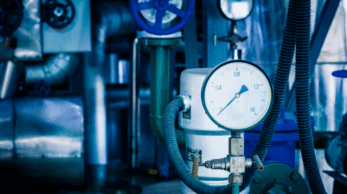The steady rise in waste volumes presents numerous operational challenges for waste management and recycling companies. Stricter regulations, the need to maximize waste recovery, and controlling costs all demand continuous process optimization. In this era of significant ecological transition, adopting an efficient industrial maintenance strategy is crucial for the sector. But how can companies improve maintenance management for sorting facilities, recycling centers, and their equipment? The answer lies in CMMS (Computerized Maintenance Management Systems).
Regulatory requirements in waste treatment
Faced with stringent regulations, recycling and waste management operators must maintain exemplary maintenance practices. Key regulatory requirements include:

- Ongoing waste traceability: From collection to final processing, waste type, volume, and treatment processes must be meticulously documented.
- Environmental standards’ compliance: These cover emissions (air, water, soil), noise and odor management, and the handling of residual waste.
- Strict adherence to QHSE procedures: Quality, Health, Safety, and Environment protocols must align with waste management plans for all classified facilities.
- Safety equipment and staff training: Proper maintenance of personal protective equipment (PPE) and specific certifications for personnel based on job-related risks.
- Equipment performance monitoring: Regular inspections and quality control for treatment equipment.
- Comprehensive maintenance records: Preventive and corrective actions for infrastructure and machinery must be thoroughly documented.
From landfill sites to sorting and recovery units, compliance and traceability are top priorities, requiring operators to master every aspect of their industrial maintenance.
Unique challenges of waste management equipment
Waste treatment facilities encompass a wide range of equipment, including:
- Industrial waste sorting plants: Featuring conveyor belts, rotary screens, and separation machines in demanding environments.
- Energy recovery units: Processing household or biomass waste with heavy combustion, emission treatment, and heat recovery equipment.
- Landfill sites: Requiring intensive maintenance of structures (dikes, leachate treatment systems) and construction machinery.
- Dismantling and recycling workshops: Where equipment must endure challenging conditions like dust and impacts.
Each facility type comes with its own set of challenges:
- Extreme operating conditions: Dust, toxic or corrosive materials, and fire risks.
- Frequent preventive maintenance: Regular inspections and replacement of critical components.
- Precise inventory management: Spare parts and replenishment planning for remote facilities.
- Specialized technician training: Adhering to strict safety guidelines during interventions.
- Tight maintenance schedules: To minimize downtime.
- Complete maintenance traceability: Essential for compliance with regulatory audits.
Implementing a rigorous maintenance plan supported by CMMS software is the best way to address these challenges.
CMMS and Innovations in Waste Management Maintenance
CMMS software offers invaluable support for optimizing maintenance in waste management facilities, regardless of their size. These systems provide significant benefits in:
Asset management and traceability
CMMS enables comprehensive asset inventory, detailed maintenance procedures, and preventive intervention plans. It centralizes and logs all technical and operational data for streamlined management.
Maintenance operation optimization
Planning and managing interventions become much simpler with CMMS. Every step can be scheduled with precision, considering production constraints, team availability, parts inventory, and adherence to QHSE standards.
Spare parts inventory management
Stock and order management modules anticipate spare part needs, avoiding costly overstocking, particularly at remote sites.
Perfect traceability and reporting
Maintenance tasks are recorded in detail, generating automatic reports and intervention summaries. This ensures impeccable traceability and facilitates regulatory inspections.
Enhancing CMMS with emerging technologies
Integrating CMMS with emerging technologies unlocks new opportunities for industrial maintenance optimization:
- IoT Connectivity: CMMS interconnected with IoT devices continuously collects real-time equipment data, enabling predictive maintenance.
- AI and Machine Learning: These technologies analyze IoT data to detect early failure signs and plan predictive interventions.
- Augmented Reality (AR): AR simplifies complex maintenance tasks by providing step-by-step visual guidance to technicians.
- Mobile Solutions: Field access to CMMS data ensures technicians have the information they need on-site.
Together, these innovations enhance predictive maintenance capabilities and improve the efficiency of waste management facilities.
CMMS by DimoMaint: a key to preventive maintenance at Val’Up
The DimoMaint CMMS software played a pivotal role in the success of the Val’Up sorting center in Ghlin. With an impressive capacity to process 50,000 tons annually, the facility needed a robust maintenance system.
DimoMaint was chosen for its ability to manage maintenance operations, stock inventory, and subcontractor contracts. Key features such as seamless data import/export and system interconnectivity were decisive factors.Thanks to DimoMaint, Val’Up achieved its target 95% equipment availability rate, ensuring smooth operations. The software also facilitated organizational improvements, streamlining maintenance processes before the facility’s launch.
For Val’Up, as for many other users, CMMS structures maintenance team workflows, simplifies task planning, and enhances energy efficiency, ultimately adding value to industrial maintenance.





